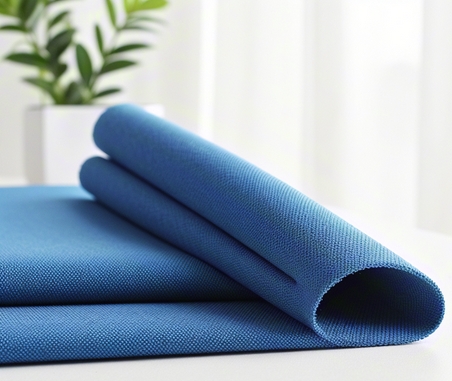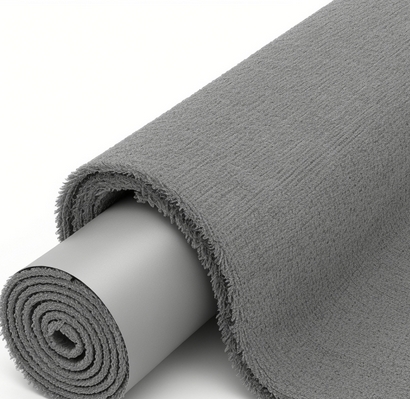Language

As an important consumable in the field of precision manufacturing, dust-free cloth plays an irreplaceable role in the environmental management of clean workshops. Through a unique weaving process, this type of special fiber products can effectively control the release of microparticles. The LPC value (particle release per unit area) usually needs to be less than 0.1μm level, which is particularly important in ultra-clean workshops with cleanliness requirements of ISO level 1, etc.
In the daily maintenance of modern clean workshops, dust-free cloth assumes a dual mission: it serves as a contaminant removal tool on the surface of precision instruments, and also serves as a protective barrier for the production environment. Taking integrated circuit manufacturing as an example, particles with a diameter of only 0.5 μm may cause chip circuit short circuit. Wiping with a high-quality dust-free cloth can control the number of residual particles on the surface to less than 5 per square centimeter, significantly improving product yield. Medical-grade clean workshops require dust-free cloth to have microbial barrier function, and their filtration efficiency must reach more than 99.9%.
Three technical parameters need to be considered when choosing an adapted dust-free cloth: first, fiber material, polyester filaments have become the mainstream choice due to their low precipitation characteristics; second, braid density, and cross-edge locking process can reduce the risk of fiber shedding; finally, cleaning certification level, products that meet IEST standards can effectively avoid cross-contamination. For example, in the optical component workshop, an anti-static dust-free cloth with a surface resistance value in the range of 10^6-10^9Ω should be used.
The four mainstream dust-free cloths in the market have their own applicable scenarios:
1. Polyester knitted type: has excellent wear resistance index (ASTM D3886 standard tests up to 5,000 times), suitable for high-frequency wipe scenarios such as robotic arms
2. Microfiber type: fiber diameter 0.2-0.5μm can be cleaned in depth, widely used in LCD panel production lines
3. Composite braided type: multi-layer structure design achieves both wet and dry, common configurations in medical equipment assembly workshops
4. Anti-static treatment type: surface voltage attenuation time<2 seconds, ensuring zero electrostatic damage during wafer handling
In practical applications, a well-known automotive electronics company reduced the product defect rate from 0.8% to 0.12% by establishing a selection matrix for wipe consumables. Its core strategy is to match dust-free cloth with different cleanliness according to the workshop cleaning level (refer to ISO 14644 standard), and to establish a quantitative management model of usage frequency and replacement cycle. This systematic management method makes dust-free cloth truly a "precision instrument scalpel" that ensures production quality.
It should be noted that incorrect selection may trigger chain reactions. A biopharmaceutical company once used ordinary dust-free cloth to clean the cavity of the freeze-dryer, resulting in the residue of 0.3μm-grade glass fiber, causing the entire batch of vaccine products to be scrapped. This confirms the basic principle of clean consumables management: rather than saying that dust-free cloth is a consumable, it is better to regard it as a key control point in the production process.
Guidelines for the characteristics analysis and selection of professional-grade industrial wipe cloth
1. Comparative analysis of material properties 1. As a preferred solution in the field of precision wiping, polyester knitted dust-free cloth has excellent stain removal characteristics. After laboratory testing, the removal rate of oil and fat contaminants by this material can reach 98.7%, which is especially suitable for optical lens wiping scenarios. However, it should be noted that the raw material cost is 40-60% higher than that of ordinary materials, and it is recommended to use it selectively in key processes.
2. Polymer woven wipes have excellent performance in removing UV cured glue residues thanks to their unique warp and weft knitting density (usually 120×80 mesh). According to actual data from a certain electronic assembly factory, the glue removal efficiency can be improved by 30% compared to ordinary materials. However, the fiber gap is prone to retain particles with particle size >5μm, and it needs to be used in conjunction with a vacuum cleaner system.
3. Composite non-woven wipe cloth, a three-layer composite structural material (wood pulp/viscosity + PET+PP), is widely recognized in large-area pretreatment of automobile spray workshops. A single wipe cloth can cover a 0.8㎡ decontamination area. However, due to the limitations of the ISO Class 5 cleanliness standard, it is not recommended to use it in the semiconductor front-line process.
4. Evaluation of special application materials
5. The dense fiber layer formed by the meltblown process of the whole polyester non-woven series controls the particle release amount to<100pcs/m³, which is suitable for the assembly environment of medical equipment. However, due to the hydrophobic properties of polyester materials (contact angle about 80°), an alternative should be selected during water-based contamination treatment.
6. PVA sponge material The water-sensitive material has a hardness of Shore D60 in a dry state, and it expands rapidly into a porous structure after contact with water. A certain LCD panel factory uses it for the removal of residual development liquid, and when used with deionized water, it can achieve a cleaning accuracy of 0.1μm.
7. Working condition adaptation decision model In the field of precision machinery manufacturing, when dealing with fingerprint pollution: It is recommended to use polyester composite microfiber fabric with a fiber size of 0.1D, with a specific surface area of 8 times that of ordinary materials. It can achieve molecular-level cleaning effect with non-polar solvents.
8. For hardened resin removal scenarios: 600D high-density woven fabric is recommended, and its warp and weft yarn is 3/1 twill braided, and can effectively decompose the epoxy resin binding force with 60℃ preheating. An application case of an aviation manufacturing company shows that the solution has reduced the rework rate from 12% to 3.5%.
In a clean room environment of a thousand-level clean room: a fully polyester nonwoven fabric that has been sterilized by gamma, the ion discharge amount is<0.01μg/cm², and it also meets the requirements of IEST-STD-CC1246D standard. However, it should be noted that this type of material will have a 30% durability in acidic environments with PH < 4.
9. Economical use is recommended to establish a step-by-step consumables use system for different cleaning levels (ISO Class 5-8).
In the field of industrial cleaning, material selection directly affects process quality. Scientific selection based on surface temperature, chemical compatibility and pollutant characteristics can significantly improve cleaning efficiency and reduce rework rate. Here are professional selection guides based on laboratory data:
Principle of temperature adaptability selection When the surface temperature exceeds 80℃, it is recommended to use 100% pure wood pulp or cotton dust-free cloth first. Laboratory tests show that this type of natural fiber can maintain a stable physical structure under high temperature environments, and materials with a cellulose content of more than 98% can withstand continuous contact at 120°C without fiber breakage. For example, in the cleaning of automotive engine components, using ISO 10993 certified cotton dust-free cloth can effectively avoid secondary pollution caused by heat conduction.
Key points of chemical compatibility control are for silicon-containing sensitive surfaces (such as semiconductor wafer treatment), and professional-grade wipe materials with silicon content below 5ppm must be selected. Taking the lithography process as an example, using a polyester composite dust-free cloth tested by ASTM E595, its silicone volatiles are controlled below 0.1μg/cm², which can effectively prevent microcircuit contamination. It is particularly worth noting that the actual inspection value of some nominal "silicon-free" products may be as high as 15ppm, and third-party inspection reports need to be strictly checked.
Tags:
RELATED RESOURCES

Professional-grade dust-free cloth cleaning method: detailed explanation of selection from Class 10
Dust-free cloth hierarchy system and application scenario depth analysis[Cleanness Grading Standards and Techn......
More

Unveiling the manufacturing process of cleanroom wipes: key technologies from ultrasonic edge sealin
As the core consumable in the field of precision manufacturing, dust-free cloth plays an irreplaceable role in......
More

Industrial Wipes Selection Guide: 10 Standards Analysis and Application Scenario Illustrations
In the field of industrial cleaning, the choice of professional wipe materials directly affects production eff......
More

Detailed explanation of dust-free cloth price and edge sealing process: How to choose the right equi
In the field of industrial cleanliness, the pricing mechanism of dust-free cloth as a key consumable involves ......
More
Related Products
Room 101, Building 1, Angeer Factory, No.4, Hetian Road, Shatian Community, Kengzi Street, Pingshan District, Shenzhen, Guangdong, P.R. China 518122
info@wipestar.com
+86-755-89616775
+86-755-89616773
Related Products
RELATED RESOURCES

Professional-grade dust-free cloth cleaning method: detailed explanation of selection from Class 10
Dust-free cloth hierarchy system and application scenario depth analysis[Cleanness Grading Standards and Techn.........
More

Unveiling the manufacturing process of cleanroom wipes: key technologies from ultrasonic edge sealin
As the core consumable in the field of precision manufacturing, dust-free cloth plays an irreplaceable role in.........
More
WIPESTAR
微信官方公众号